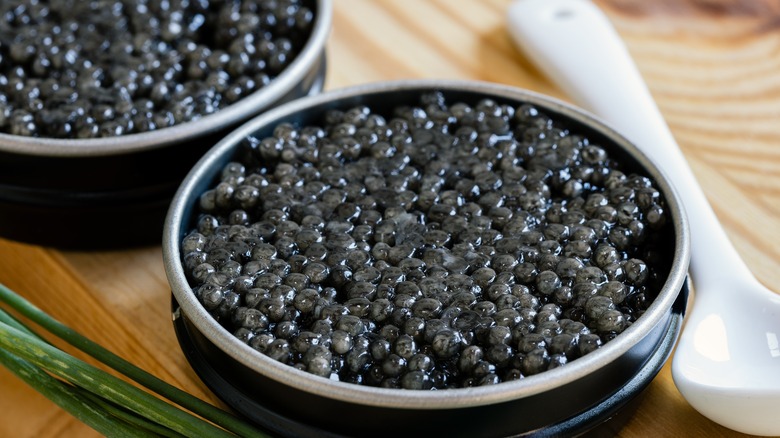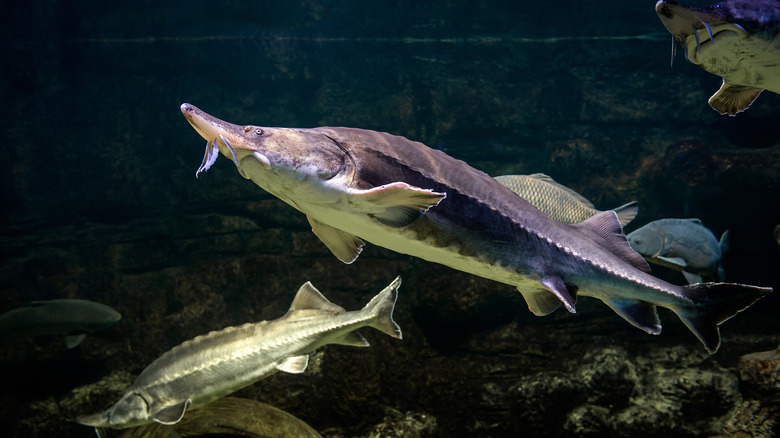The Reason Caviar Was Once Given Away For Free
When you think of caviar, you likely think of expensive restaurants, lavish parties, and high-end Russian vodka. This reputation is not unearned as the notoriously pricey fish eggs were brought to fame amongst European nobles by the Russian tsars who treated the dish as a delicacy starting in the 13th century (per Medium). Today, while not exclusive to royalty, caviar is still a rare treat around the world, with The Pricer noting that even the inexpensive varieties cost about $50 to $100 per ounce, while the rarest type which is harvested from white sturgeon can go for a whopping $40,000 for one tablespoon!
So what makes this dish so exclusive? Sadly, because it is difficult to harvest and thanks to overfishing–largely to obtain caviar -– incredibly scarce. Caviar is unfertilized fish eggs harvested from several species of sturgeon which live in Europe and North America and are particularly prevalent in the waters of Russia and Ukraine (per Encyclopedia Britannica). Unfortunately, while these fish have been around since the Jurassic period, the World Wildlife Foundation notes they are the most endangered species group on Earth. Even with sustainable fishing and caviar harvesting practices being developed, the roe is still incredibly time-consuming to obtain since the rare fish do not begin producing eggs until they are seven to 20 years old and then only do so once every few years (per Masterclass). Additionally, the eggs must be manually harvested and prepared and have a shelf life of just a few weeks once packaged.
Bar caviar
So with all the work needed to harvest caviar and its history of luxury, you might be surprised that it wasn't always considered a special delicacy. In fact, according to The Spruce Eats, there was a point in U.S. history where caviar was given out for free in bars as a snack!
Although the most famous caviar comes from the sturgeon native to the Black and Caspian seas, several varieties of the fish are native to the U.S. which also produce rich-tasting, salty eggs. In the early 19th century, in fact, The Spruce Eats notes that these fish were plentiful and so cheap that bars and saloons would give away the caviar in the same way modern bars give away pretzels or peanuts– as a salty snack to make people thirsty and encourage them to drink more. Eventually, though, fishermen realized they could exploit this abundance in Europe where the fish were still considered a delicacy. By 1900, the U.S. was the leading exporter of caviar in the world– with dealers often fraudulently claiming the eggs were Russian– a trend which continued until the 1960s when the fish nearly went extinct and the prices began to skyrocket.
Today, while true caviar is still coveted, there are many alternatives for the discerning fish egg connoisseur popularized since the 60s, including roe from salmon and whitefish (per Medium) and even vegan alternatives made from seaweed or seeds for those who want a similar experience without eating fish eggs.

